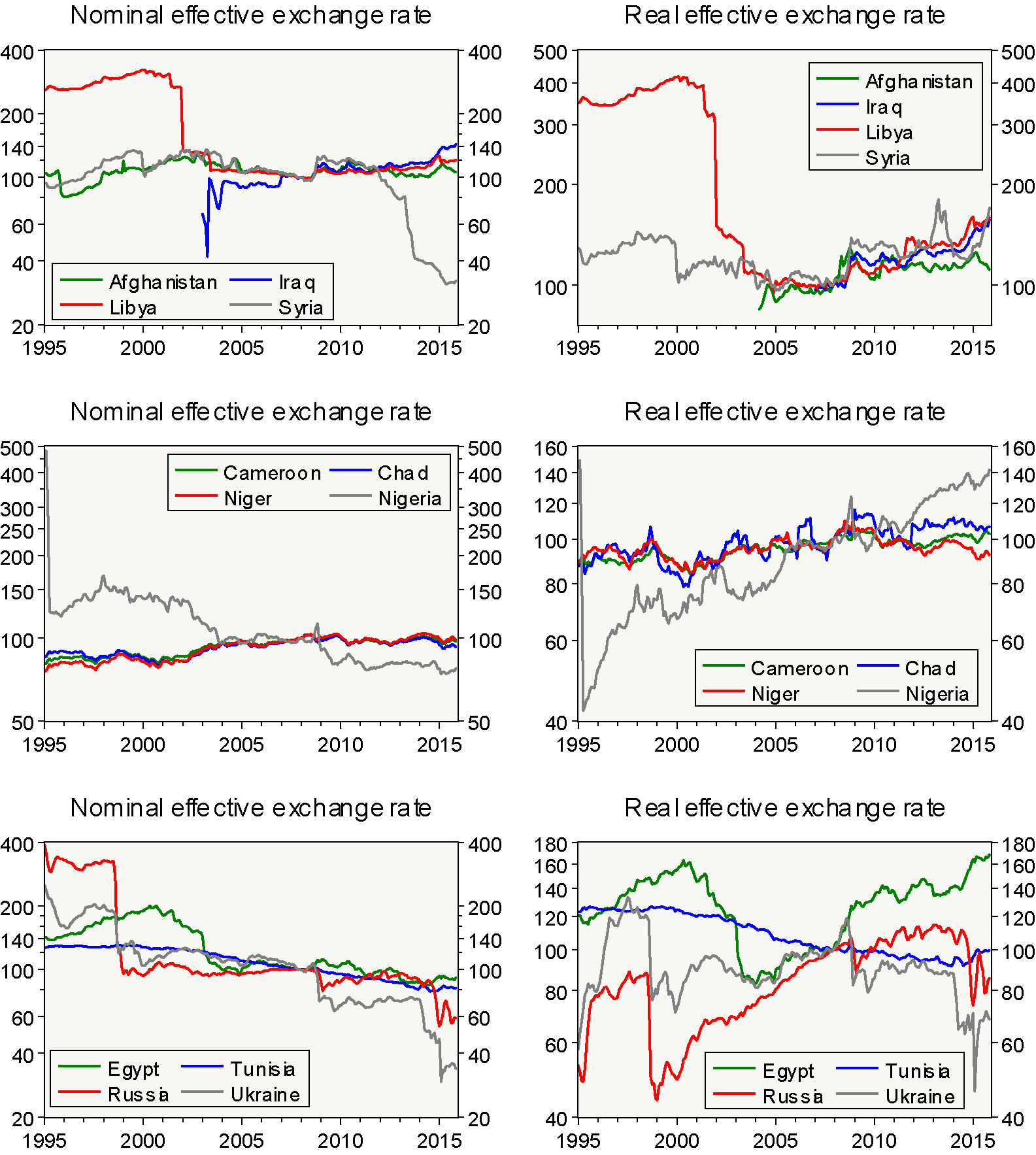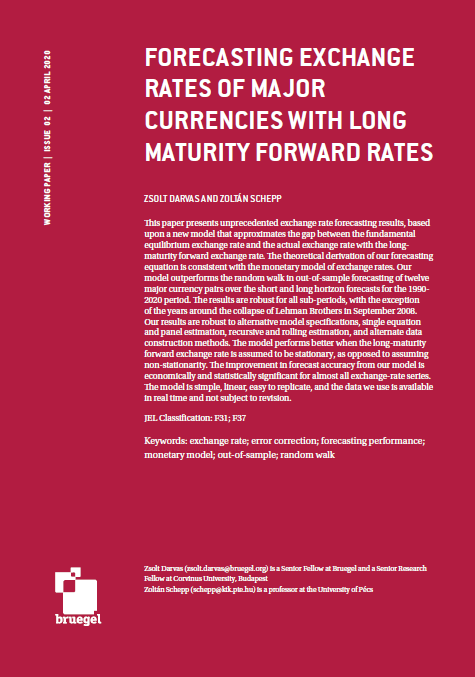Blog Post
Real exchange rates in conflict zones
Several countries experiencing conflict have been able to maintain a stable nominal exchange rate and thereby their real exchange rates were either stable or even increased due to high inflation. In contrast, nominal exchange rates have recently crashed in Syria, Ukraine and Russia, but high inflation has partially or fully counteracted its impact on the real exchange rate.
We have updated our monthly real effective exchange rate dataset up to November 2015. We have also added some new countries, including various countries experiencing conflict. I therefore thought it would be interesting to post a chart showing the evolution of nominal and real effective exchange rates in a selection of countries experiencing conflict.
Some of these countries were able to maintain a relatively stable nominal effective exchange rate, supported by tight capital control measures, as indicated by the index of Menzie Chinn and Hiro Ito *. As a consequence, real effective exchange rates were primarily driven by the inflation differential with respect to trading partners. In several of these conflict-ridden countries the real effective exchange rate remained broadly stable or even appreciated.
Among the twelve countries included on the chart, only Syria, Russia and Ukraine have recently experienced major nominal currency depreciations.
In Syria, high recent high inflation has even led to a real appreciation of the Syrian Pound, despite the fall in the nominal value of the currency. (Note that the latest Syrian inflation data is for May 2015 as reported here. For calculating the real exchange rate until November, we assumed that the 12-month inflation rate remained unchanged in June-November 2015. Therefore, our Syrian real exchange rate data for June-November 2015 is preliminary.)
High inflation also counteracted some of the impacts of nominal depreciation on the real exchange rate in Russia and Ukraine. In fact, while the current Russian real exchange rate is well below its 2013 value, it does not differ much from the historical average of the past two decades. In Ukraine, on the other hand, the current real rate is well below its historical average.
* According to the Chinn-Ito index, only Russia had a reasonable degree of financial openness among the 12 countries in 2013 (the latest available data). Egypt was even more open financially in most of the 2000s, but major restrictions were introduced from 2008-2013.
Nominal and real effective exchange rate (December 2007=100), January 1995 – November 2015
Source: Bruegel dataset
.
Republishing and referencing
Bruegel considers itself a public good and takes no institutional standpoint. Anyone is free to republish and/or quote this post without prior consent. Please provide a full reference, clearly stating Bruegel and the relevant author as the source, and include a prominent hyperlink to the original post.











